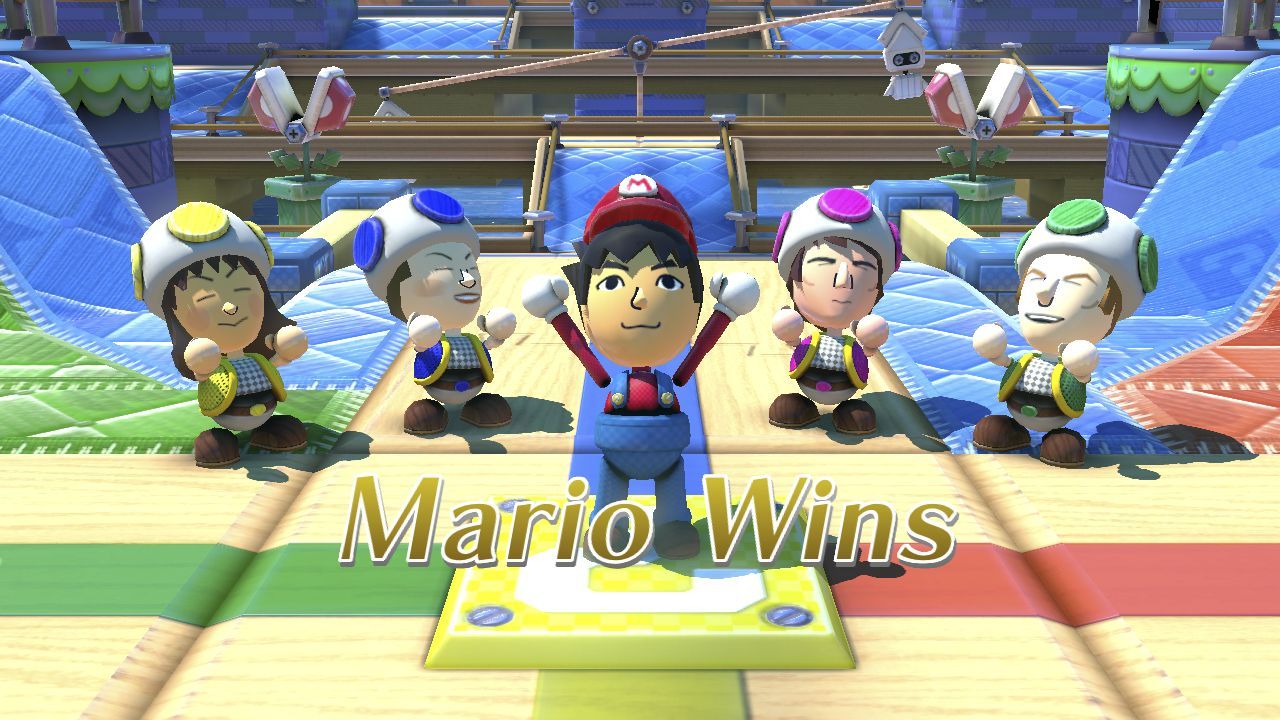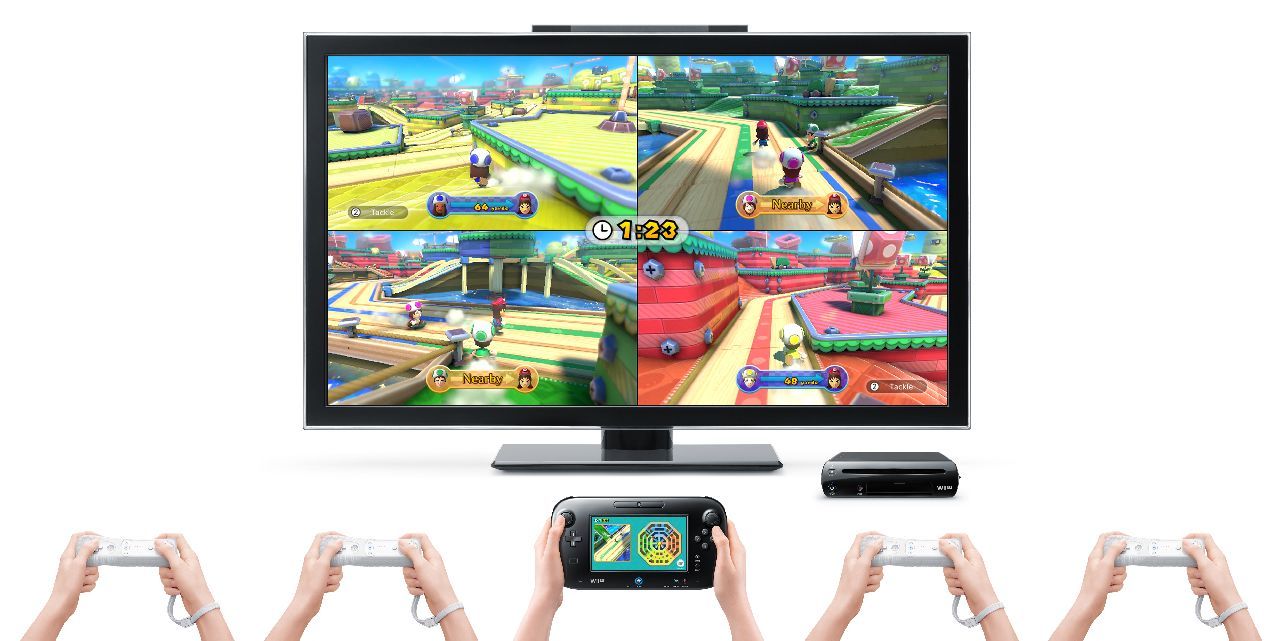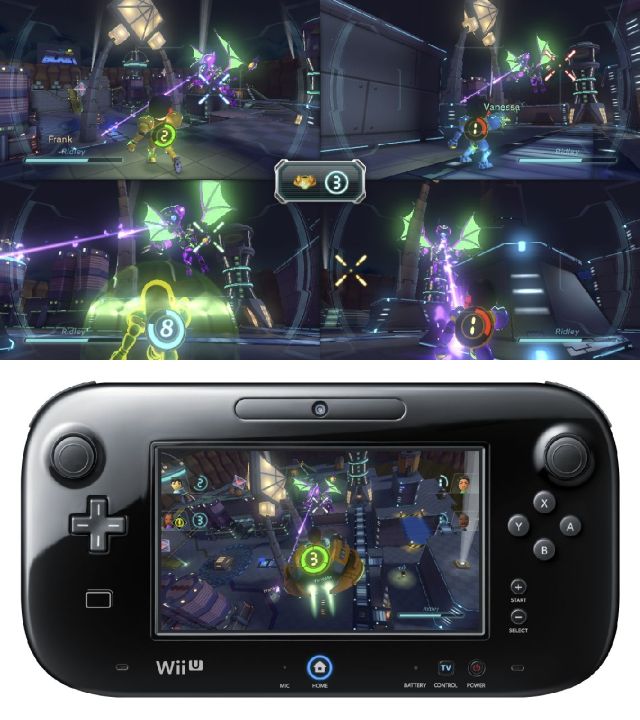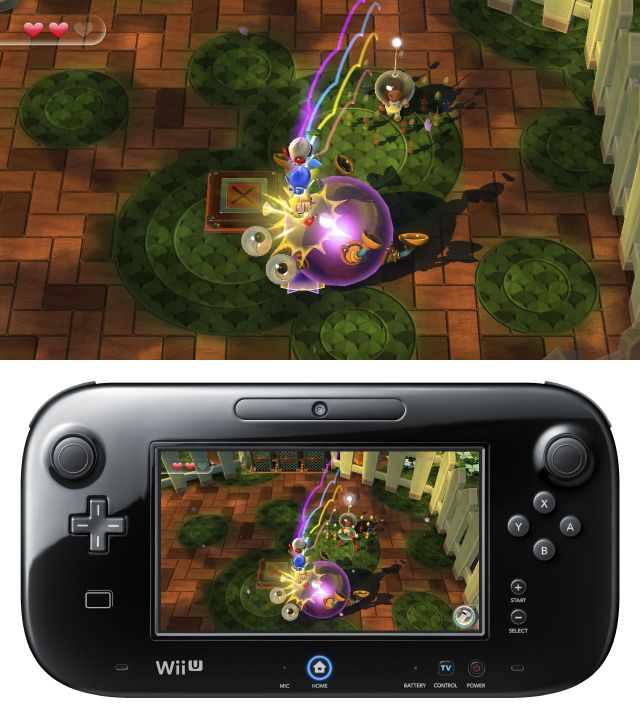Nintendo Land Review
It has long been Nintendo tradition when debuting a brand new console to create a launch title that proudly showcases the innovative experiences the new hardware can offer. Super Mario 64 alleviated any doubt that classic 2D franchises could easily migrate into the revolutionary 3D era, and Wii Sports perfectly exhibited the potential for the interactive gameplay the original Wii would achieve. Now, the process that Nintendo started in 2006 has reached new heights with the launch of the Wii U, along with another demonstrative launch title called Nintendo Land, a carnival style park packed with Nintendo-themed mini games.

The main game area is a spacious plaza featuring a central tower surrounded by a ring of gates that lead to each of the mini games. A long and overly detailed introduction from a friendly, feminine robot named Monita gradually brings the player into the world of Nintendo Land. Features are revealed in sequence as the player progresses through the introduction. Each game also has a detailed tutorial to get through before playing. And though some of these can be quite entertaining (watching kimono-clad Monita be kidnapped by evil ninjas was particularly enjoyable), they almost leave players with the sense that they’ve already done everything before even getting into the real games. Thankfully, most of the attractions in this park are worth the wait.
No collection of Nintendo games would be complete without Mario, Metroid, and The Legend of Zelda. In Nintendo Land, each of these iconic franchises is represented with a unique mini game in its image. In Mario Chase, one player runs around a small map trying to avoid being caught by the other players. This game is very simple, almost to the point of being boring. The Animal Crossing: Sweet Day mini game based on almost exactly the same concept also shares this flaw. Conversely, Metroid Blast and The Legend of Zelda: Battle Quest are both relatively extensive mini games, each consisting of multiple game modes. Metroid Blast lets up to five people work together to combat waves of enemies, team up to shoot down the unfortunate GamePad user’s ship, or compete to collect tokens from targets. Battle Quest similarly pits up to five players against hordes of familiar foes, with the Wii Remotes acting as swords and the GamePad serving as a bow. These make for great fun, either alone or with a group, but the control functions could use some adjustment.

Three other mini games, Luigi’s Ghost Mansion, Takamaru’s Ninja Castle, and Captain Falcon’s Twister Race, make more creative use of the Wii U’s GamePad controller. Luigi’s Ghost Mansion allows one player to be the ghost who haunts the mansion and tries to scare the ghost hunters without being caught by their flashlights and losing health. The ghost is invisible on the TV screen, with the only indication of its presence being the rumbling of the Wii Remotes, and this player instead relies completely on the GamePad’s display. In Ninja Castle and Twister Race, the GamePad is held vertically and the game uses the device’s built-in gyro sensors to control aiming, either to chuck shuriken (better known as throwing stars) at enemy ninjas or to pilot a ship along a race course.
Out of the single player games, Yoshi’s Fruit Cart, essentially a spatial orientation test masquerading as a game, makes the best use of the TV/GamePad screen duality that is so prominent in the Wii U’s list of innovations. This game cleverly combines the TV display with the controller’s built in touch screen, rather than simply playing on one screen at a time. The player must draw a course for a Yoshi style motor cart, collecting fruit along the way to unlock the gate to the next level. The fruit, as well as various obstacles in later levels, is only displayed on the TV, while the path must be drawn on a matching canvas on the GamePad. The early levels are rather simple for anyone with a good sense of positioning, but when the fruit starts moving around the challenge of collecting it all in the correct order increases significantly. The cart also has a very limited supply of fuel, which tends to run out too frequently on later levels, making them more frustrating than difficult.
Octopus Dance, based on Nintendo’s Game & Watch Octopus, is a definite party game that was probably designed with optimal embarrassment in mind. One player takes center stage in a dance contest to repeat the moves of a robot-like instructor oddly dressed in Scuba gear. There are various distractions to trip up the player, including background dancers, an octopus that squirts ink onto the screen, and, worst of all, a flying camera panel that displays a video feed of the player’s face for all to see (which can, thankfully, be turned off in the options menu). This is only slightly more ridiculous than Balloon Trip Breeze, a practically pointless move-through-the-course-avoiding-obstacles style game in which the only action is to sweep the stylus across the screen to create a gust of wind.

Fans of Pikmin may have been disappointed when the original Wii U launch title Pikmin 3 was delayed, but at least Pikmin Adventure offers some consolation. One of the more versatile mini games that can be played with one player on the GamePad (functioning as Olimar) and up to four others on Wii Remotes (as Pikmin companions), it makes for a fun co-op experience that is rare on a Nintendo console. Much like the franchise on which the mini game is based, Olimar commands a friendly group of the native creatures to help him back to his space ship after being stranded on a strange alien world. The story, complex level design (complete with boss battles), and detailed landscape to explore make this one of the more involved attractions.
Donkey Kong’s Crash Course is probably the most challenging mini game in this theme park. The player must tilt the GamePad left and right to move a triangular car through a 2D maze of slopes, ramps, lifts, jumps, and other mechanisms. As the title implies, the main goal is to get through the course without crashing, which is exactly what you’ll mostly be doing. This game is a learning experience, with any progress taking either patient practice or a great deal of luck. Holding up the GamePad constantly while playing can be uncomfortable, but making it past the infamous Area 9 on the course will see a player hailed as a hero by the Miiverse community.

The park is populated by Miis of other users who play the game through the fairly new Nintendo Network. Nintendo Land ties directly into Miiverse, allowing players to post their thoughts on the mini games and interact with the rest of the online community. Though the game does not offer any online multiplayer, those with plenty of real life friends can enjoy all of the mini games, plus the “Attraction Tour,” a train that circles the plaza and functions as a multiple event tournament between two or more players. All of the mini games produce arcade style tokens that can be redeemed for mystery boxes containing items to decorate the plaza, though having to walk around using the GamePad as a viewfinder to see them is a bit annoying. A fun list of activities with mostly group-oriented gameplay makes Nintendo Land ideal for a group of people who just want to busy themselves for a bit by picking up a game, but for most, there is little long term value. This was meant as a proof of concept piece to let people better understand the vast potential of the Wii U, a role in which it definitely succeeds.
